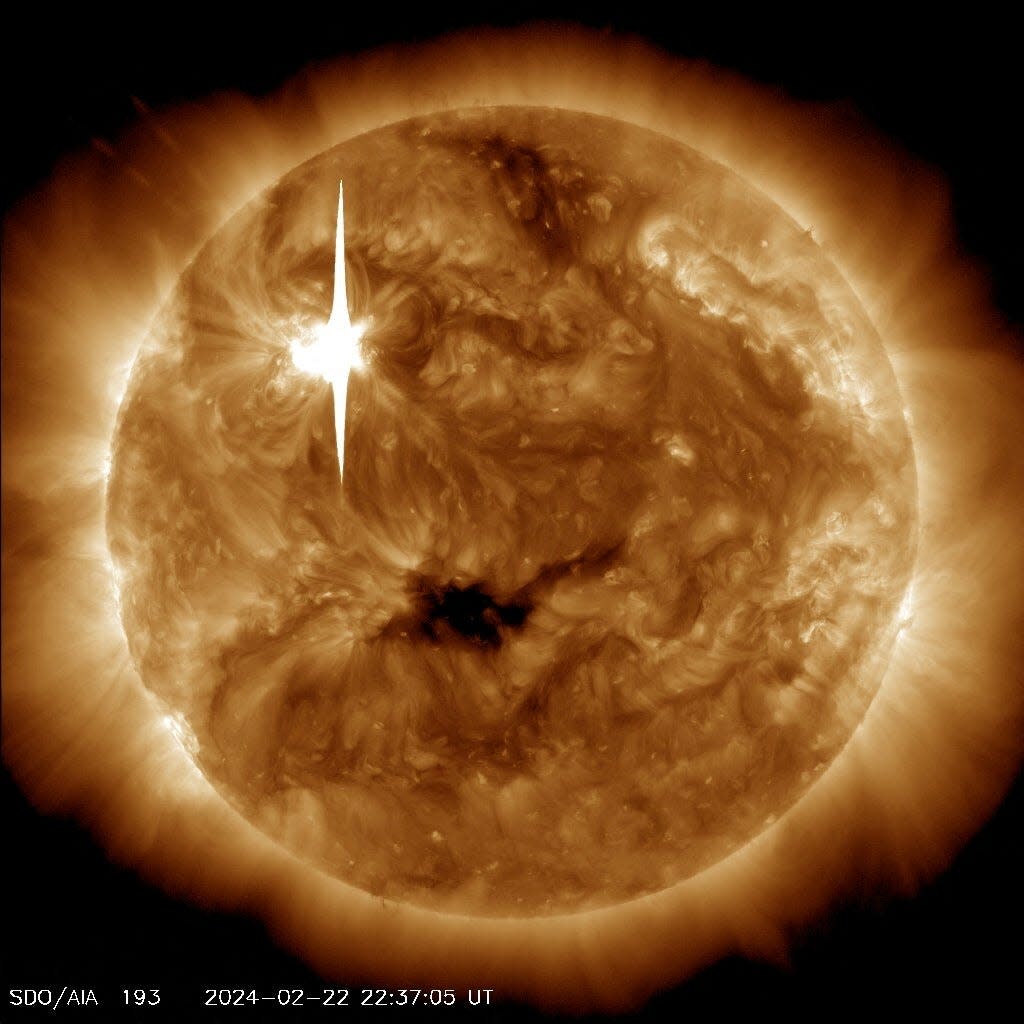A Dyson sphere might help capture all available energy

As we humans grow in numbers and technological sophistication, we will need to generate more and more energy for our use. That likely means ever more reliance on renewable sources of energy like solar and wind energy. Even so, there will come a point when we have tapped all available energy sources our planet has.
We do, however, live quite close to an almost endless source of energy: our sun.
In 1960, physicist Freeman Dyson proposed that an advanced civilization might dismantle all the other planets, asteroids, and everything else in its solar system to create a sphere surrounding its star to collect all the solar energy it emits to run the civilization. Because of the 2nd Law of Thermodynamics, such a Dyson Sphere would necessarily radiate excess heat in the form of a strong infrared glow. Dyson suggested that we could detect excess IR radiation from any such civilizations in our galaxy.
If a civilization is in the process of building a Dyson sphere around its star, we should detect periodic dimming of the star as the completed parts orbit it. Those dips in brightness would look different than a planet orbiting the star, of which we have discovered thousands. A Jupiter-like planet would block less than one percent of the star’s light.
In 2015, astronomer Tabetha “Tabby” Boyajian discovered a star that displayed light dips of up to 22 percent. Astronomers dubbed it Tabby’s Star. Initially, they thought that this star had hundreds of comets in a cluster that crossed in front of the star. However, observations ruled that out. Many armchair scientists, and even a few astronomers, suggested it might be an incomplete Dyson sphere. With more observations, most astronomers accepted that the cause is most likely a large dust cloud, probably from a moon that had shattered, and parts of the dust cloud periodically blocked some of the star’s light.
The hallmarks of a Dyson sphere can be summed up easily: variability in a star’s brightness and an excess of IR radiation of a particular pattern due to waste heat. With Tabby’s star, the IR excess doesn’t exactly match a Dyson sphere. The cloud of dust fits it better.
Recently, two separate studies looked at the data from 3 satellite missions that have examined millions of stars in the Milky Way looking for Dyson sphere candidates. One group led by PhD student Matías Suazo at Uppsala University in Sweden describes their study as “searching for extraterrestrial intelligence using indirect signatures of astroengineering,” in other words, Dyson spheres. They came across more than a few compelling candidates. Fifty-three to be exact, stars that possessed both accepted signatures of Dyson spheres.
Neither group has yet convinced the astronomical community at large that they have indeed found Dyson spheres, but most agree the studies are intriguing and need further study.
In 1964, a Soviet astronomer Nikolai Kardashev proposed a method of measuring a civilization’s level of technological sophistication. He determined a civilization’s level by the energy sources it can utilize. According to the Kardashev Scale, a type I civilization can utilize and control all the energy sources of its home planet. That would include taming and using the energy of natural events such as volcanoes, tornadoes, earthquakes, etc.
A Type II civilization captures and uses all the available energy of its host star by creating a Dyson sphere. A Type III civilization captures all the energy emitted by its galaxy, every star, black hole, etc. Earth is currently considered to be a Type 0.7 civilization.
Have we finally found Type II civilizations? Only further study can answer that question.
Where the full moon will be
On Aug. 20, the full moon and the planet Saturn appear so close that they almost seem to touch. Between 9 p.m. and 10 p.m., the two are about three moon diameters apart. This should make a fantastic view in a low-power telescope that can see all of the moon and Saturn with its rings in the same field of view. Even a pair of binoculars offers a delightful view.
About 1 a.m. Aug. 26, the half-full moon sits about a fist’s width held at arm’s length below and to the left of the Pleiades star cluster, the brightest we can see from Oklahoma. Again, binoculars will provide a dazzling sight.
Planet Visibility Report
As August begins, Mars and Jupiter rise well before the sun and remain in the predawn dark sky all month. Saturn rises after midnight and moves higher in the evening sky throughout August. Venus shines brilliantly in the west after sunset and moves farther from the sun all month. Mercury is near Venus in early August, but is much fainter. It quickly dives towards the sun to reappear in the morning sky at month’s end. Full moon occurs on Aug. 19.
This article originally appeared on Oklahoman: Astronomers are still searching for a confirmed Dyson sphere
